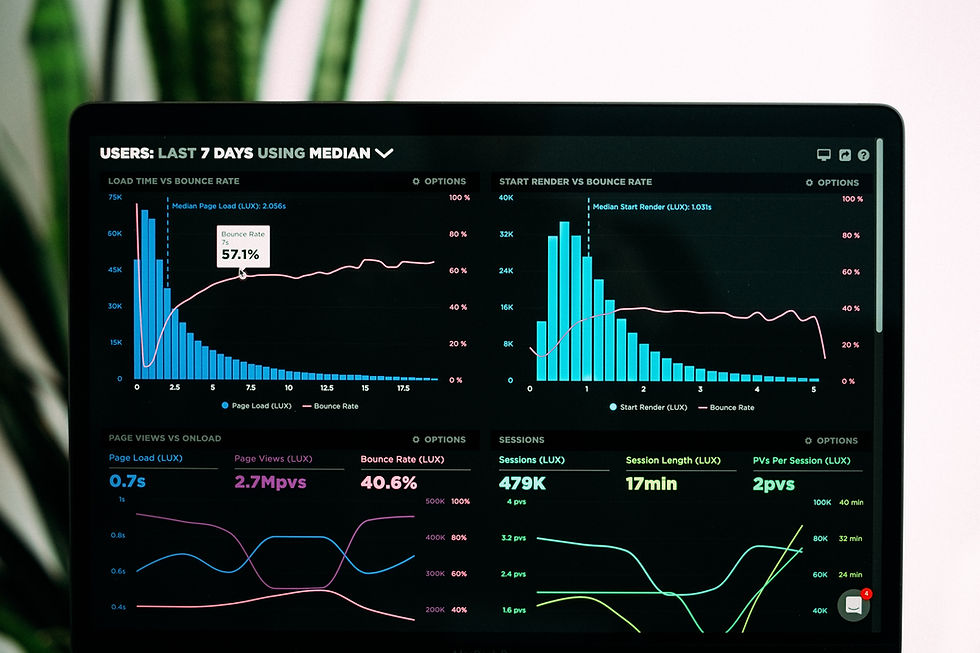Unlocking Insights: 10 Advanced Analytical Techniques for Pharmaceutical Industry Analysts
- Mark Price
- Feb 24
- 3 min read
Enhancing Sales Performance with Strategic Data Analytics
In today’s dynamic pharmaceutical sector, leveraging data effectively is a transformative skill for analysts. Whether you are examining sales figures, evaluating the effectiveness of Key Account Managers (KAM), or tracking market trends, deploying advanced analytical techniques is essential for gaining actionable insights and driving impactful business decisions. This post explores ten powerful analytical methods designed to elevate your capabilities and maximise your impact on sales and strategic planning.
1. Call Efficiency Analysis
Objective: Evaluate KAM teams' effectiveness in converting their engagements into sales outcomes.
Approach: Calculate each KAM team's “sales per call” ratio, segmented by time period and hospital level. This analysis identifies high-performing teams and strategies, providing a benchmark for best practices that can be replicated across the organisation.
Benefit: Pinpointing the most efficient use of resources helps optimise KAM activities, focusing on high-yield strategies to drive increased return on investment (ROI).
2. Call Type Impact Analysis
Objective: Determine which types of KAM engagements (e.g., face-to-face, virtual, or phone) are most effective in generating sales.
Approach: Segment call data by engagement type and correlate frequency with sales outcomes to reveal the most impactful methods, allowing for strategic refinement.
Benefit: Tailoring strategies based on call type performance leads to more precise planning, higher engagement, and improved conversion rates.
3. Hospital Tier Impact Analysis
Objective: Assess the impact of targeting higher-tier hospital accounts on overall sales performance.
Approach: Compare sales per call across various hospital tiers (e.g., tertiary vs. secondary) to determine whether prioritising higher-value accounts significantly boosts sales outcomes.
Benefit: Strategically focusing resources on high-impact accounts amplifies the effectiveness of KAM efforts and maximises sales performance.
4. Time-Lagged Correlation Analysis
Objective: Understand the delayed impact of KAM activities on sales to reveal the temporal relationship between actions and outcomes.
Approach: Analyse time lags between KAM efforts and sales outcomes to uncover patterns, such as the influence of activities in one quarter on sales in the next.
Benefit: Recognising time-lag effects enhances the accuracy of sales forecasts, enabling better alignment of resources with anticipated revenue timelines.
5. Seasonality and Trend Decomposition
Objective: To optimise strategic planning and identify seasonal patterns and trends in sales and KAM activity.
Approach: Decompose time series data into seasonal, trend, and residual components, distinguishing cyclical variations from long-term growth indicators.
Benefit: Accounting for seasonality allows for more accurate predictions and the development of proactive strategies that leverage peak periods for maximum impact.
6. Regression Analysis for Predictive Modelling
Objective: Develop predictive models that forecast sales performance based on influencing factors such as KAM activity, call types, and hospital tiers.
Approach: Utilise multivariate regression analysis to quantify each factor’s impact on sales, enabling more precise decision-making.
Benefit: Predictive models facilitate proactive planning and data-driven strategy formulation, enhancing the effectiveness of sales initiatives and resource allocation.
7. Comparative Analysis Across Regions
Objective: Examine KAM efficiency and sales performance across regions to identify geographical trends and disparities.
Approach: Segment the data by region, analysing variations in call efficiency, call type impact, and sales outcomes to reveal regional strengths, preferences, and operational gaps.
Benefit: Understanding regional dynamics allows for developing tailored, localised strategies that enhance overall market performance and drive better sales outcomes.
8. Sales Conversion Rate Analysis
Objective: Evaluate the conversion rates of various KAM activities into sales results.
Approach: Calculate conversion rates by dividing total sales by the number of calls made for each KAM type. This provides a clear view of the most successful strategies.
Benefit: Identifying which engagement methods yield the highest conversion rates helps optimise resource use, ensuring efficiency and maximising impact.
9. Variance Analysis for Performance Gaps
Objective: Investigate discrepancies where call activity does not match expected sales performance.
Approach: Pinpoint periods or accounts where high call activity does not correlate with sales outcomes, highlighting external factors or strategy misalignments.
Benefit: Addressing these performance gaps helps refine KAM strategies, ensuring alignment between effort and results to achieve better outcomes.
10. Longitudinal Analysis of Hospital Accounts
Objective: Track performance changes in specific hospital accounts over time to measure the long-term impact of KAM efforts.
Approach: Conduct longitudinal analysis to evaluate how changes in call activity influence an account’s sales trajectory across multiple periods.
Benefit: Long-term insights enable the development of customised engagement strategies that foster sustained growth and strengthen account relationships.
Conclusion
The pharmaceutical industry thrives on data, and analysts who master these advanced techniques can significantly enhance their organisation’s decision-making and performance. By incorporating these analytical methods—ranging from efficiency and regional comparisons to predictive modelling —analysts can deepen their expertise and provide actionable, strategic insights that drive sales and growth.
Eye4Health specialises in transforming complex healthcare data into practical, effective strategies for the pharmaceutical sector. By partnering with us, you can access advanced analytics and industry insights designed to elevate your organisation’s capabilities, optimise your resources, and achieve sustainable growth in an increasingly competitive landscape.



Comments